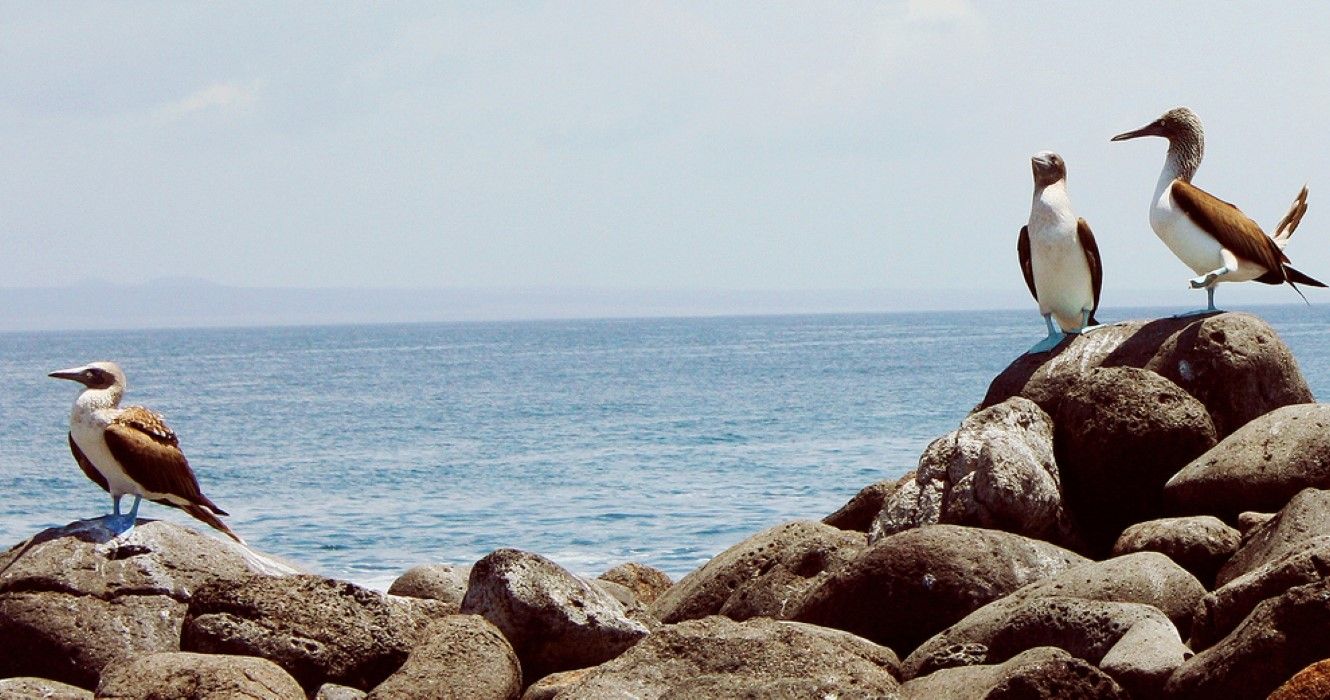Quick Links
South America sounds like the ultimate destination for nature lovers, and the continent offers endless attractions. Galapagos, Ecuador, is arguably the most intriguing of them. The archipelago fascinated Charles Darwin in the 19th century, which was essential for his On the Origin of Species.
Nearly 200 years after Darwin set food on Galapagos, the archipelago remains just as fascinating as in the past. Located 600 miles off the coast, Galapagos has 13 major islands and a handful of islets and is one of the world's foremost destinations for admiring the wildlife.
The Best Time To Visit Galapagos
The good news is that it is possible to visit the Galapagos year-round, but some months are indeed better than others. Tourists who plan their trips between December and May are likely to have better weather, making hiking and boat trip more pleasant. During those months, the temperatures are around 70 °F to 80°F.
Rains are more common from June until November, but the lower temperatures attract wildlife. Therefore, traveling in those months means that tourists can encounter penguins, rare fishes, and birds.
How To Get To Galapagos
The only way to reach Galapagos is by catching a flight from Quito, Ecuador's capital, or Guayaquil. As Quito stands 8,000 above sea level, travelers can experience altitude sickness, but it is possible to mitigate the effects.
The archipelago has two airports: Seymour Airport, located on Baltra Island, and the San Cristobal Airport, on San Cristobal Island. Before booking the flight, travelers have to decide the itinerary and whether they want to explore Galapagos on a four-day cruise or stay in a hotel on one of the islands and take daily boat trips.
Families traveling to Galapagos should be aware that some cruises don't accept children under six years old.
Is It Better To Explore Galapagos By Land Or Sea?
Deciding how to travel inside Galapagos is a crucial decision. Travelers can book a cruise or stay on the inhabited islands, which will define everything else, including the costs and length of stay. Personalizing an itinerary and combining land-based tours and cruises is possible, but it demands more time on the archipelago.
Cruises
The cruises last approximately four days and three nights, but some itineraries can last up to eight days. The excursions often have expert guides who can explain everything about the islands, from their geology to their history. As the tours often start early in the morning, the cruises travel during the night. The days are filled with activities such as snorkeling with sea lions and hiking from an impressive viewpoint.
The meals and some drinks are included on the cruises, and they can consist of soups, salads, and seafood. Many tour agencies are selling the tours, and they often have four categories: Luxury, first class, mid-range, and budget. Of course, the prices increase accordingly with what they offer.
For experienced divers, there are a handful of scuba diving cruises to explore the best spots for seeing the archipelago underwater, including the Islands of Darwin and Wolf.
- Prices: Starts at $1,500 ( Four days and three nights)
Island Hopping
Island hopping is definitely more economical than going on a cruise. Travelers can find hotels on three islands: Santa Cruz, Floreana, and Isabela Island, and they can either book an organized land tour or plan everything on their own. They are also an excellent alternative for people who are often sick on boats.
When planning the itinerary, the best thing to do is to book a hotel near the harbor, as most tours leave from there. Another option is choosing a hotel that also offers tours. Travelers also need to remember that they will probably need to stay on more than one island.
What To Pack To Galagapos, Ecuador
Although there are shops on some islands, the prices tend to be high, so it is wise to make a list and don't forget essential items.
Clothes And Shoes
During the day, shorts and light clothes are recommended and, of course, swimming suits. Regarding shoes, Teva sandals are practical, as they can be used on wet and dry landscapes on the islands. Another option is using closed-toe walking shoes, as some hiking pass by volcanic rocks.
Medication And Sunscreen
Most tours have their first-aid kit, but it is always clever to carry one. Prescription drugs should also go in the suitcase, and sunscreen is another essential item when traveling to Galapagos.
Money
The official currency on the island is the U.S. Dollar, and it is always clever to bring cash. There is a bank at Puerto Ayora (Santa Cruz), but travelers won't have access to bank services on most days.
Documents And Fees
Americans and Canadian citizens don't need a Visa to enter Ecuador if they plan to stay less than 90 days. They should have a valid passport for at least six months and also pay some taxes.
The Transit Control Card (TCC) is mandatory for any Galapagos tourist, costing $20. Travelers should pay it in cash at Quito or Guayaquil airports before entering the plane to Galapagos.
Tourists should also pay the National Park entrance fee as soon as they arrive on the island. It costs $100, and the government uses it to preserve the archipelago.

